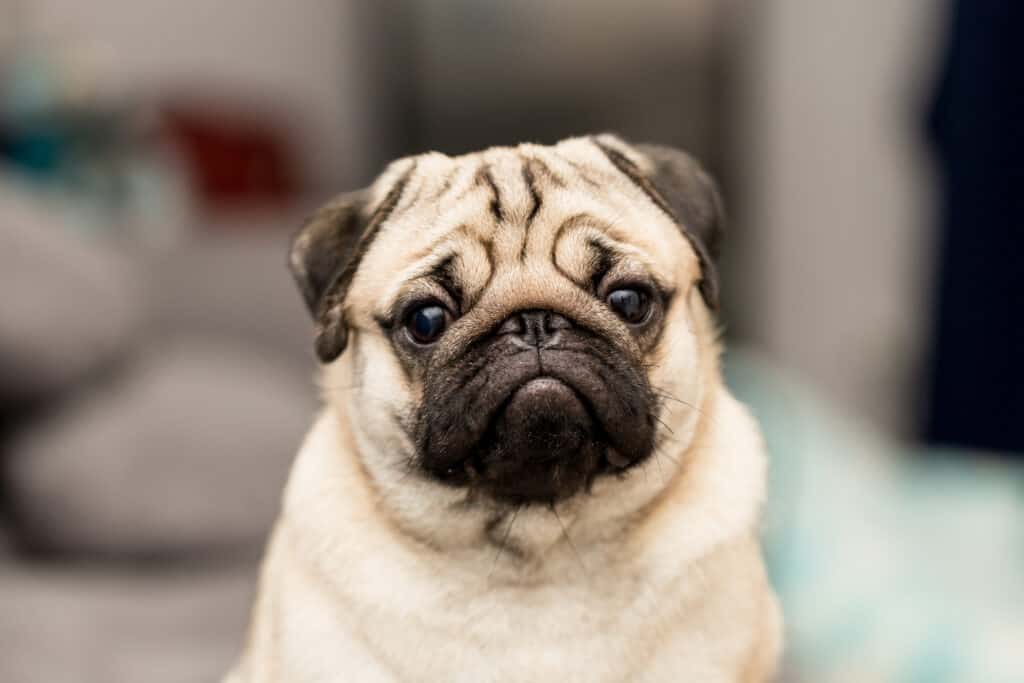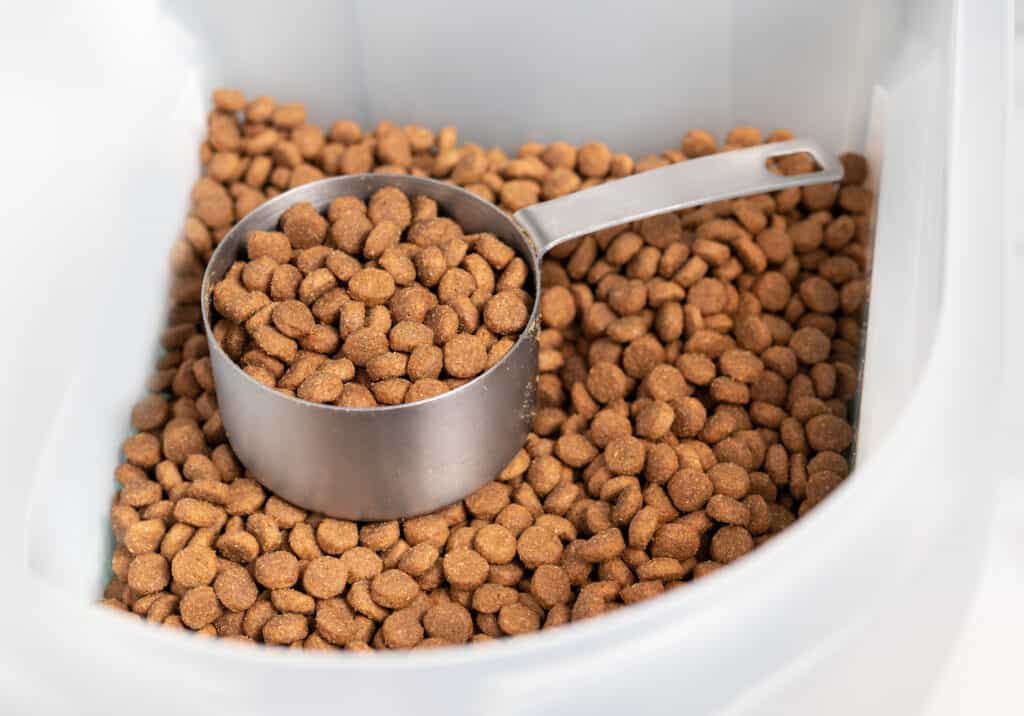Pugs Introduction
If you are looking for a loving, easygoing, funny canine friend, pugs are the breed to get. These dogs were first bred to be companions of royalty – which explains their friendly and gentle personalities. They are a pure breed and are described as “a lot of dog in a small space.”
Pugs are highly sensitive and great human companions. Despite their easygoing and mischievous side, these small canine friends love their humans and won’t appreciate being left home alone. They are also affectionate and get along well with their owners and family members.
An ancient breed, pugs can be traced back to China over 2,000 years ago. The Emperors of ancient China loved flat-faced, small dogs – the pekingese, shih tzu, and pug were all developed as pets of the Emperor, his family, and friends of the court. Pugs were a closely held treasure that outsiders could only acquire as a gift.
Dutch traders returned home to Europe with pugs in the 1500s. According to legend, the pug became the mascot of Holland’s royal House of Orange when a pug saved the life of the Prince by barking to warn him of an attack on his camp by Spanish troops. When William and Mary of Orange arrived in England to assume the monarchy, their pugs accompanied them and began a love for the breed among the British.
Pugs belong to the group of toy dogs. They have a charming and playful personality and are great companions; their distinctive features are a wrinkly, short-muzzled face, large bulging eyes and a curled tail.
Despite these pups’ happy personalities, they are stubborn and can be difficult to train because they are always ready for games. These dogs carry themselves with dignity but they like cuddling and will follow you everywhere you go around the house.

This dignified-yet-stubborn breed likes to cuddle, loves games, and isn’t always willing to take instruction!
©220 Selfmade studio/Shutterstock.com
Resources:
The 15 Different Types of Pugs and Pug Mixes
When pugs only belonged to the royal families, breeding them was a crime. But, there has been a lot of breeding in the 21st century, leading to the birth of different pug varieties. Some of them are:
- Jug
- Bullpug
- Pom-A-Pug
- Pugshire
- Pughuahua
- Pugsky
- Puggle
- Bugg
- Pug Tzu
- Toy Poxer
- Pughasa
- Golden Pug
- Malti-Pug
- Corgi Pug
- Ori Pei
The Best Dog Food for Pugs
As a pug owner, you want to have a healthy, strong, beautiful, and happy dog, and there is no better way to do it than by giving it high-quality food. Also, pugs are prone to weight gain, so you must watch the ingredients in the food and the portions.
The best food for this dog breed is dry kibble. It is suitable for strong teeth and does not cause a runny stool like wet canned dog food. If your pup is teething, they can’t eat dry food comfortably, so you can mix it with bits of wet canned food. Also, it is good for the teething food to have a small amount of beef broth, low-sodium chicken, and water.
If your pug puppy is over 12 weeks old, introduce scheduled feeding. It allows you to control the portions and what your dog eats to maintain its health. You should also groom your pooch, walk and exercise it to keep it in a great puggy mood.
Since pugs don’t exercise a lot and are prone to weight gain, they should eat low-calorie food. Small breed dry dog food is nutrient-rich and has optimal calorie levels for a healthy weight. It also has high-quality proteins with wholesome grains without meat products. Look for food that is suitable for pug puppies, adult dogs, and seniors.

Dry kibble is the best food for a pug to eat. If you have a pug puppy, mix it with a little bit of wet food.
©sophiecat/Shutterstock.com
Owning a Pug: 3 Pros and Cons
| Pros An adorable small size: Because of its small size, you can easily cuddle, transport, and travel with a pug. Friendly with children: Pugs are naturally affectionate and will love being around your family and children. They are also playful and will keep your child entertained. Easy to live with: You don’t have to clean after your pug all day. They are also easily house trained and won’t mess up your apartment. | Cons Overheating during summer: Yes, your pug can overheat during summer. They have a small nose that makes it hard to cool themselves off. Vulnerable yet beautiful eyes: A pug’s beautiful eyes are sensitive. So you should avoid squeezing your puppy tightly because its eyes could pop out. Easily gain weight: If you don’t want to have an overweight fur baby, feed it the best nutrition possible. Play with pugs often to help with exercise requirements. |
Pugs Size and Weight
Pugs are small dogs, with the males growing to a height of 10 to 14 inches. They weigh more than the females, with an average weight of 20 to 30 pounds. Female pugs are shorter. They grow up to 10 to 12 inches and weigh 18 to 28 pounds.
| Height (male) | 14′ tall |
| Height (female) | 12′ tall |
| Weight (male) | 30lbs, fully grown |
| Weight (female) | 28lbs, fully grown |
Pug Common Health Issues
Although Pugs were bred for royalty, they are prone to many health issues, mostly linked to their body shape that people find cute. When choosing to own this dog, you must consider prioritizing its health.
The dog’s compressed nose makes it hard for them to breathe and cool down, leading to a condition called brachycephalic obstructive airway syndrome (BOAS). Pugs have a tough time getting air into the lungs, keeping oxygen from benefitting the rest of it’s body .
Pugs also have sensitive eyes that are prone to ulcers and infections. They could inherit this problem or get infections when playing. Also, although hip dysplasia is mainly associated with big dogs, it is common among pugs. It happens if the hip has not developed properly, causing the ball and socket not to fit like it should.
Pugs Temperament and Behavior
Pugs are calm, affectionate, and playful, making them suitable for families with children. They are easy-going and like to please their owners. These small dogs also crave attention, so they will spend more time cuddling and less time alone.
Despite their calmness, pugs are also known for their stubbornness. But, because they are eager to please, these small canines are not aggressive and can be trained to be patient. When your pug’s energy is low, it will rarely play or interact with people.
They are also overly lazy and can spend the entire day sleeping. Make sure to walk and play with them to keep them healthy.
Resources
How to Take Care of Pugs
Pug Maintenance and Grooming
Pugs have short hair, but they are big shedders and have many folds. You should schedule a bath once a month to reduce the chances of skin infections. Make sure to rinse and dry their facial folds to avoid yeast infections and clean their ears.
Since they are all-year shedders, get a slicker brush to groom their coats. Their nails don’t wear down since they aren’t that active, so you must trim them regularly.
Training
With their playful and lazy traits, pugs are hard to train. They are mischievous and can rebel when not in the mood. They are easily bored and distracted by small things and had rather play than learn a new trick.
Resources: Chewy
Exercise
Since pugs have small noses and can easily suffer BOAS when too tired, they need little exercise to keep them healthy. The best activities include short walks that won’t tire them out and play time to keep them from being too lazy.
You can play with them using toys and try other activities like fetching. The dogs are small, and since they don’t require much exercise, they can easily live in apartments. If you live in the city, this is the perfect dog for you.
Pug Puppies
If you are getting a pug puppy, planning before bringing it home is advisable. Make a comfortable space for it to sleep, like an adjustable crate. Take care to provide the correct diet with less fattening ingredients. You should also have grooming tools ready because it can easily get infections from its skin folds and needs to get used to regular grooming. Of course, don’t forget to buy toys for your new puppy!
Pugs and Children
Pugs are calm and affectionate, so they will get along well with your young ones. They are also playful and fun, making for a great play mate. This breed desires attention and love, and you will likely find it cuddling with your child.

Pugs are affectionate and easy-going, making them excellent family dogs.
©Africa Studio/Shutterstock.com
Dogs Similar to Pugs
There are other dog breeds similar to pugs. These include Boston terrier, French bulldog, and puggles.
- Boston terriers are easily confused with Pugs because of their small size. However, it is a great apartment dog and gets along easily with owners and their children.
- French bulldog weighs almost the same as Pugs and is bred for companionship. They also have folds on the face like Pugs.
- Puggle: a crossbreed between a Pug and Beagle, Puggles have a similar body to that of a Pug. They are also affectionate and easy to live with.
Resources: Hepper, Smart Canine
Popular Names for Pugs
Popular names for Pugs are:
- Daisy
- Luna
- Pip
- Lottie
- Duke
Resources: Rover, Daily Paws, Kidad
In Summary
- Pugs are good with kids: Pugs have an affectionate and playful personality and like being amongst family members. They are also good with kids.
- Pugs have average lifespans: Pugs have an average life span of 10-14 years. However, others can live up to 15 years with exceptional care and breeding.
- Because they are pure bred – they can be expensive: Although it was illegal to sell pugs in the ancient past, today, you have to pay $800 to $1500 to own one. Some pugs cost up to $3000.
- Pugs require special care: Because their cute faces are flat and wrinkly and their eyes bulge – pugs need a little extra attention. Their skin folds and eyes must be kept clean to prevent infections.
Up Next…
- The Best Dog Food for Pugs for 2022: We’ve taken all of their lovable traits into consideration and have selected the best foods for your pug!
- Puggle vs Pug: What’s the Difference?: Considering a pug? Maybe a puggle would be a better choice for you. Find out!
- The 4 Best Brushes for Short-Haired Dogs: Your little pug needs to be brushed daily – we have chosen the best brushes for your little cutie!
- The Best Dog Beds for Small Dogs for 2022: Pugs are known for being low energy dogs – so have a comfy bed ready when he needs it!
The photo featured at the top of this post is © 220 Selfmade studio/Shutterstock.com
Ready to discover the top 10 cutest dog breeds in the entire world?
How about the fastest dogs, the largest dogs and those that are -- quite frankly -- just the kindest dogs on the planet? Each day, AZ Animals sends out lists just like this to our thousands of email subscribers. And the best part? It's FREE. Join today by entering your email below.
Thank you for reading! Have some feedback for us? Contact the AZ Animals editorial team.






